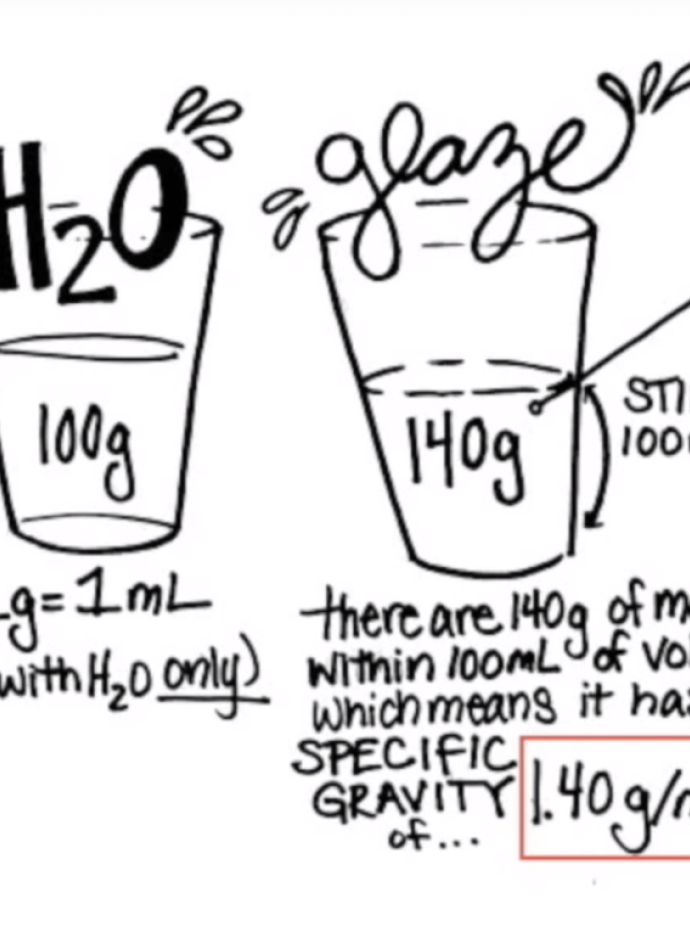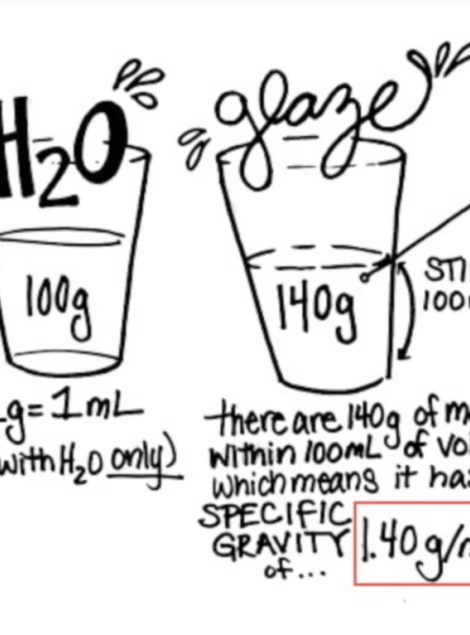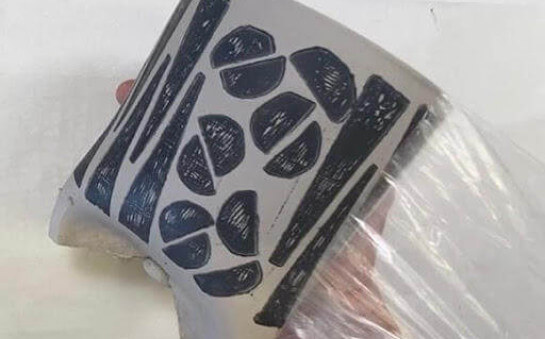How to Measure the Specific Gravity of a Glaze

The specific gravity of a glaze is an extremely important number in ceramics- it tells us how many particles of actual glaze material exist in a standard unit. This tells us how dense the particle count is and therefore how thickly the glaze will apply. If the number is too low, the glaze should be left to settle and water should be removed from the top because the glaze will be too thin when applied. If the number is too high, the glaze needs more water because it is too thick and will have issues bonding to the piece. See the specific gravity worksheet PDF provided for an organized process!
Supplies
- Gram Scale
- Small Container
- Calculator
- Pen or Pencil

Video Tutorial
This short video tutorial will give you a visual demonstration on an easy and effective way to test your glazes' specific gravity.
Example: Potter's Choice Dipping Glazes Recommended SG
As an example of how the required SG is expressed for the dry mix Potter's Choice Glazes offered by AMACO. Testing and notes help keep your glazes within range and working well!



